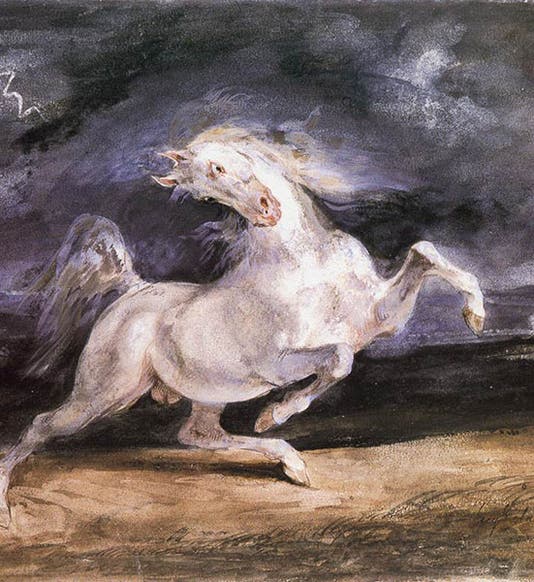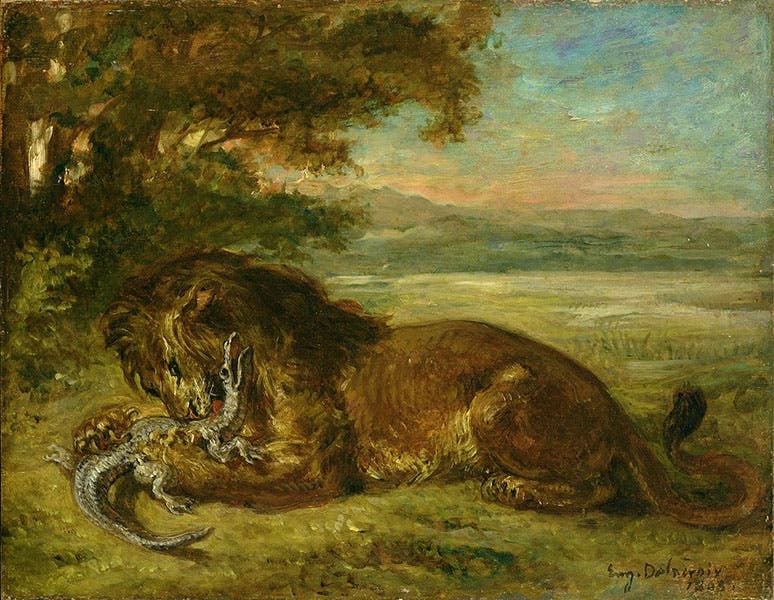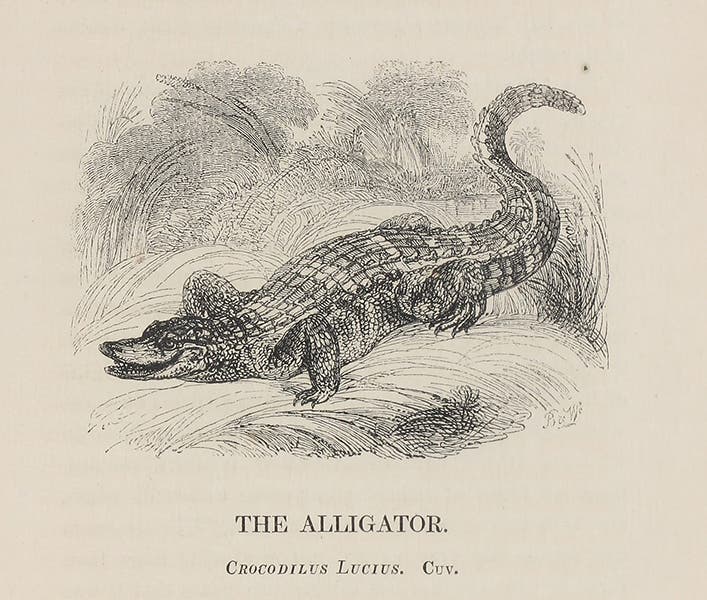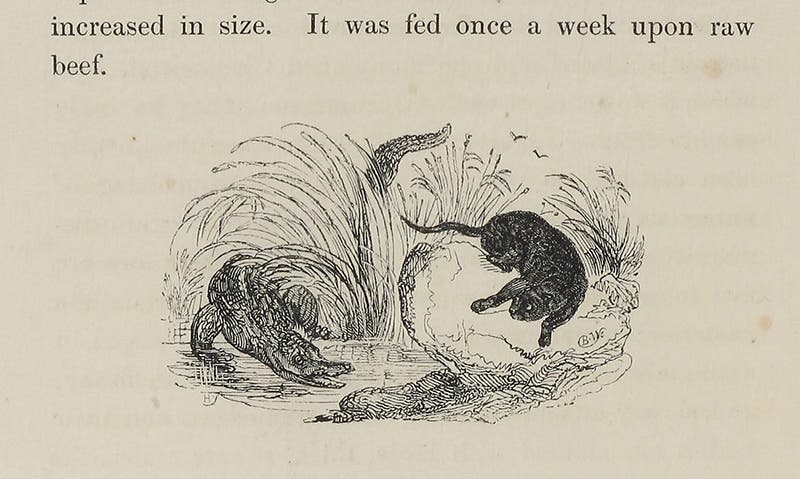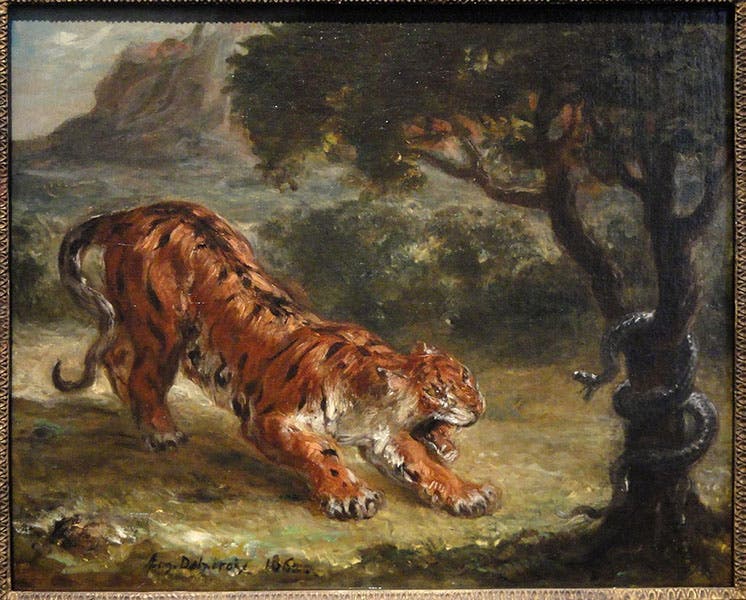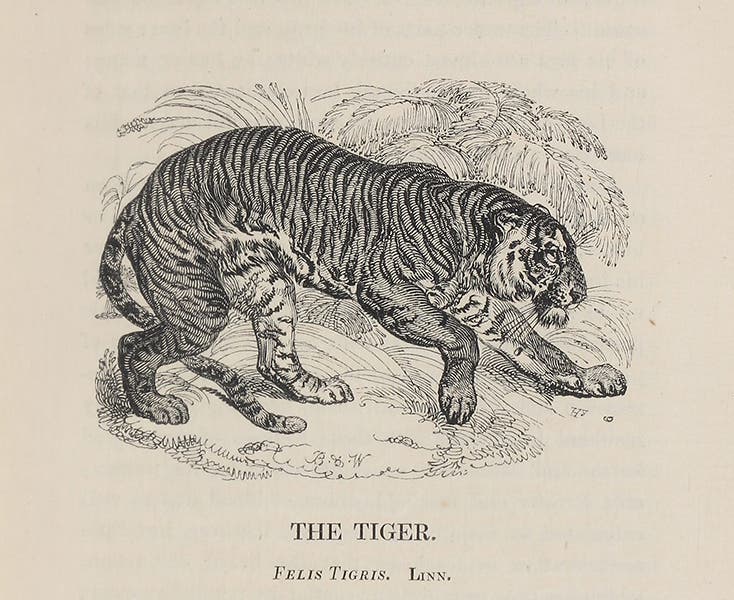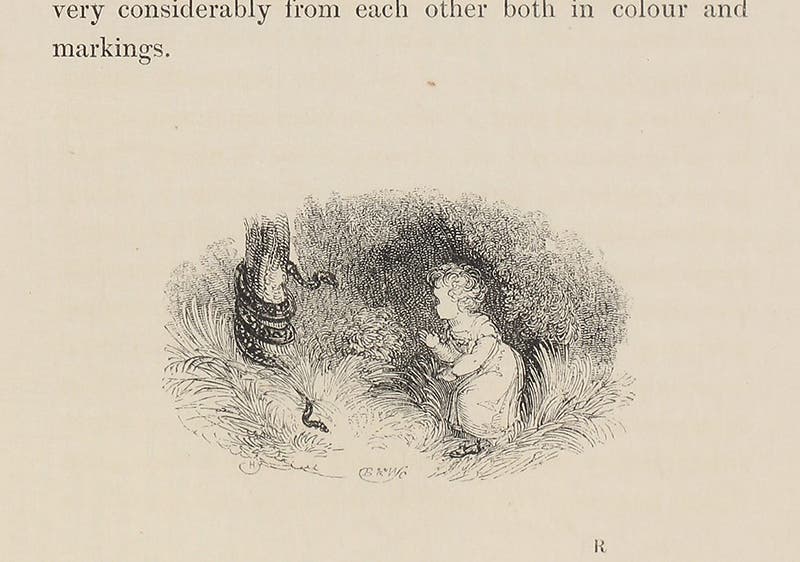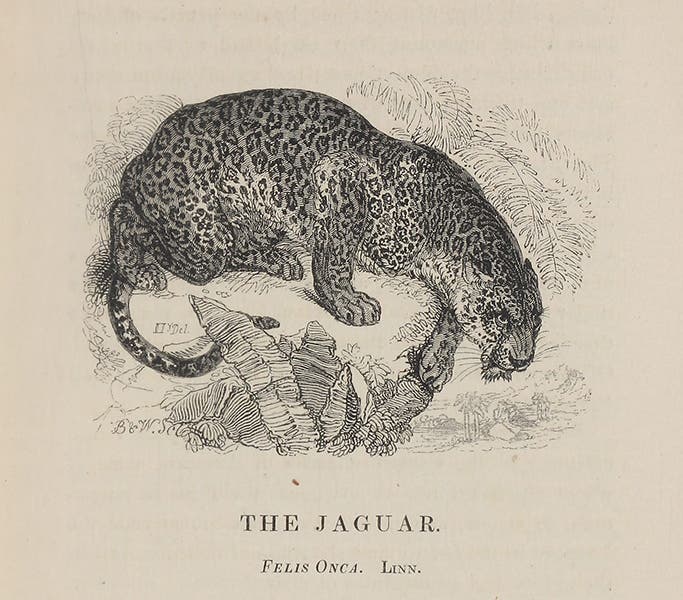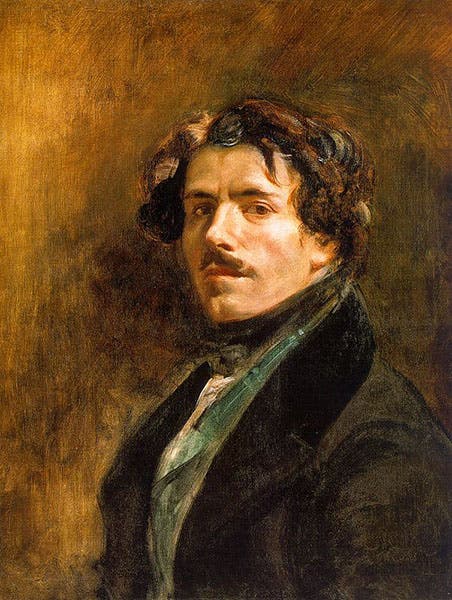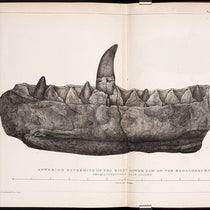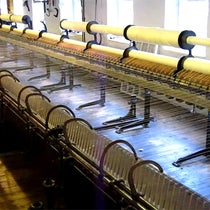Scientist of the Day - Eugène Delacroix
Eugène Delacroix, a French artist, was born Apr. 26, 1798. Delacroix is noted as one of the most important figures of French Romanticism, giving us such famous paintings as Liberty Leading the People (1830), now hanging in the Louvre, and Christ on the Sea of Galilee (1841), which is in the Nelson-Atkins Museum of Art, right here in Kansas City. Delacroix is also known for his paintings of animals, usually frenzied animals, such as his Horse Frightened by Lightning (1824; first image), in the Szépmûvészeti Múzeum, Budapest, or animals under attack by other animals. It has been often pointed out that Delacroix spent hours at the Paris Museum of Natural History, sketching lions and alligators for use in his paintings, such as Lion Playing with an Alligator (1863), in the Kunsthalle Hamburg (second image, below). However, we pass along another possibility today.
I don't often browse through art history journals, having my hands full trying to keep up with history of science literature, but many years ago I ran across a short note in the Burlington Magazine, in which the author, Lee Johnson, not otherwise known to me, pointed out some striking resemblances between some of the animals drawn by Delacroix and the wood engravings by William Harvey in a book, The Tower Menagerie, written by Edward Bennett and published in 1829. Since we happen to have The Tower Menagerie in the Library, I thought it might be interesting to demonstrate Johnson's argument with pictures, not to cast any aspersions on Delacroix, but to show that the boundaries between science and art often overlap, to the benefit of both.
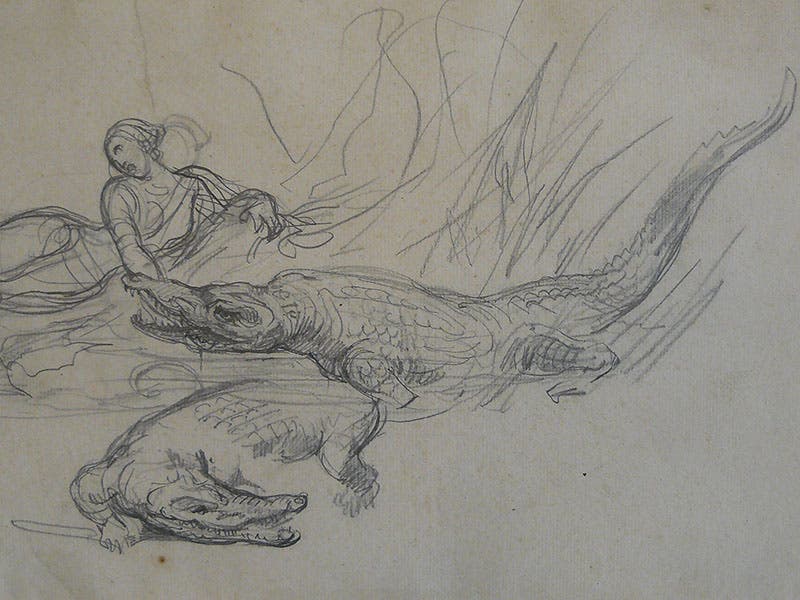
Sketch of two alligators and a woman being bitten, charcoal by Eugène Delacroix, 1829, in the Louvre (artaupresent on pinterest)
Let us start with a drawing that Delacroix made around 1829, just after The Tower Menagerie was published, a drawing that is now in the Louvre (third image, above). It is not even a preparatory sketch for a painting - it is just a sketch. When we leaf through The Tower Menagerie, we find two wood engravings of alligators - a large one that begins that chapter on alligators, and a tiny tailpiece, which ends it (both images just above). It is fairly clear that Delacroix was intrigued by the two alligator images and set out to see what he could do with them. Sticking the woman’s arm in the large gator's mouth was clearly an afterthought, and not a happy one. It is known, by the way, that Delacroix owned a copy of The Tower Menagerie and loaned it to friends.
Another artwork, this time a finished painting, that can be traced to a William Harvey woodcut is Tiger Startled by a Snake (1858; sixth image above. The relevant illustration in The Tower Menagie is again a tiny tailpiece (seventh image, just above), but still, it seems to have inspired Delacroix's more dramatic painting.
Some of the connections are more tenuous, where it would seem that Delacroix was not copying Harvey but merely getting ideas from his wood engravings. In the Tiger and Snake (1862; eighth image, above), the left forepaw is evidently taken from Harvey's wood engraving of a tiger, but not much else (ninth image, above). The snake coiled around the tree might have come from Harvey's tailpiece showing a little girl encountering a similar snake coiled around a tree.
And finally, Johnson suggested that the pose in Delacroix's painting, A Tiger Drinking (ca 1853; (eleventh image, above), in the Wadsworth Atheneum in Hartford, might have been based on the similar pose in Harvey's wood engraving of a jaguar (twelfth image, just above).
What this all shows is not that Delacroix copied his paintings from other sources - clearly he did not. But it does demonstrate that, in several instances, Delacroix found it easier to be inspired by an wood engraving than by a stuffed tiger in the Paris Museum. Artists draw inspiration from a variety of sources, and when you have the genius of Delacroix, even wood engravings from books can be transformed into vibrant animal art.
Finally, we point out that Harvey made his drawings of pumas and tigers from live specimens in the Royal Menagerie in London. So, in a way, Delacroix was drawing live animals. He just had an intermediary – a gifted intermediary – in Harvey.
One work that Delacroix needed no outside inspiration for was his self-portrait (1837; last image, just above), in the Louvre.
Dr. William B. Ashworth, Jr., Consultant for the History of Science, Linda Hall Library and Associate Professor emeritus, Department of History, University of Missouri-Kansas City. Comments or corrections are welcome; please direct to ashworthw@umkc.edu.

